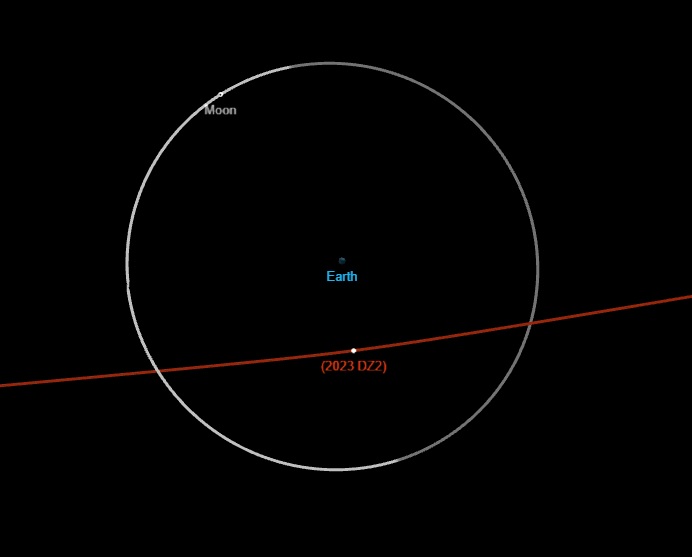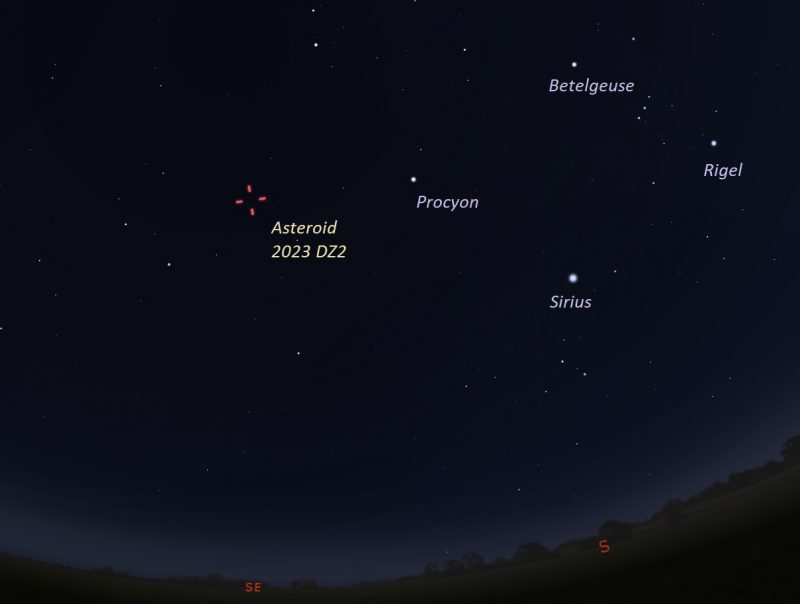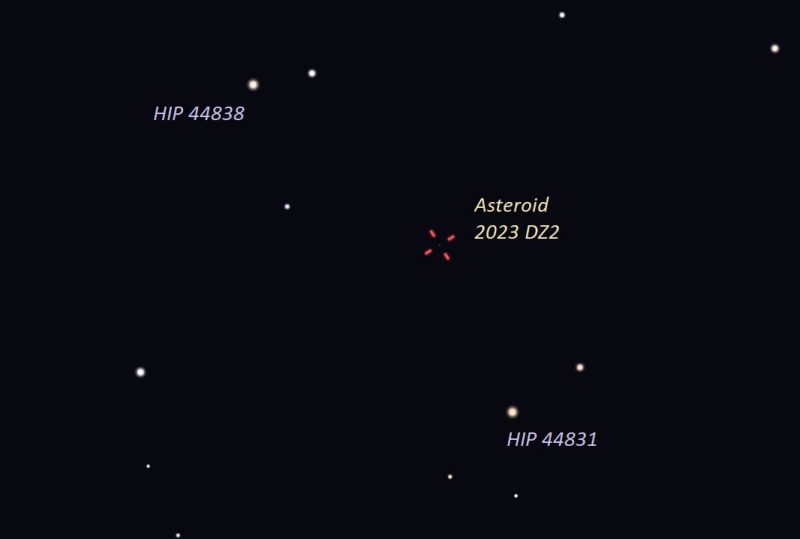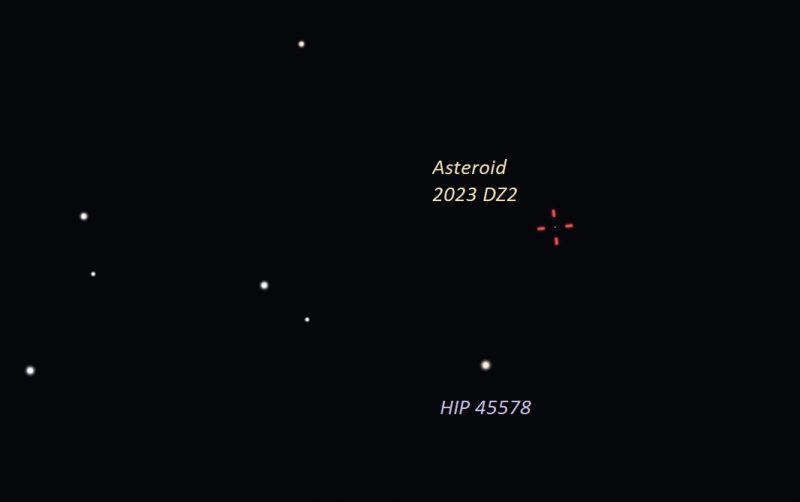
Yet another newly discovered space rock will safely zip past Earth, this one on March 25, 2023. It’ll sweep by at a distance less than halfway to the moon. Astronomers at the observatory of La Palma, in the Canary Islands, Spain, discovered the asteroid in late February, 2023. And amateur astronomers might get a glimpse of the asteroid as it speeds past. See the charts at the bottom of this post.
Closest approach to Earth is thought to occur at around 17:02 UTC (1:02 p.m. EDT) on March 25. But the exact time and other details might be updated as more observations come in.
The asteroid has been labeled 2023 DZ2. It’s part of the Apollo family of asteroids. Current estimates put 2023 DZ2’s size at about 233 feet (71 meters) in diameter.
As of March 16, 2023, there were only 31 observations of the new asteroid’s orbit spanning 1.9854 days. New observations will better define the space rock’s orbit and should allow scientists to get a more precise estimate of its size, which could be between 173 and 393 feet (53 and 120 meters) in diameter.
For comparison, the asteroid that entered over Chelyabinsk, Russia, in February 2013 was a space rock around 65 feet (20 meters) in diameter. Watch a video of size comparisons in asteroids here.
2023 DZ2 is classified as a NEO (Near Earth Object). It orbits the sun every 3.25 years.
Small risk of impact in 2026
As is the case with many newly discovered asteroids – whose orbits are incompletely known – preliminary analysis of the space rock’s trajectory suggests a very unlikely 1-in-7,700 chance that the asteroid will impact Earth on March 28, 2026.
But – with further observations – it’s likely astronomers will rule out even this small risk.
Visible in small telescopes
Asteroid 2023 DZ2 will pass 0.4 lunar distance (closer than half the Earth-moon distance) from Earth’s surface. The relative closeness will enable observers to see the space rock in six-inch (15cm) and larger diameter telescopes.
The space rock is traveling at a speed of 17,672 miles per hour (28,440 km/h), or 7.90 km/second, relative to Earth. While it sounds like a huge speed relative to what we’re familiar with on Earth, it’s a relatively slow asteroid in contrast to other space rocks that astronomers study.
Since the asteroid will be passing closer than half the Earth-moon distance, the small distance will make it appear as a “slow-moving star” in the field of a small telescope. And you may even be able to detect its motion in real time!
One of the best techniques sky enthusiasts use to catch an asteroid is to point the telescope at a known star in the asteroid’s path. Then just wait for the slowly moving space rock to appear. Fortunately, many small telescopes now include a computerized Go-To hand control. Thus, you can point the instrument at a reference star to get a glimpse of the passing object.
When is the best time to see asteroid 2023 DZ2?
We found the best time to see asteroid 2023 DZ2 from the Northern Hemisphere will be early on the night of Friday, March 24, 2023. Good luck, and clear skies to you!




Bottom line: Newly discovered asteroid 2023 DZ2 will safely pass Earth at less than half the distance of the moon on March 25, 2023. People with telescopes should be able to spot the visitor.
The post 200-foot asteroid 2023 DZ2 to pass closer than moon first appeared on EarthSky.
0 Commentaires